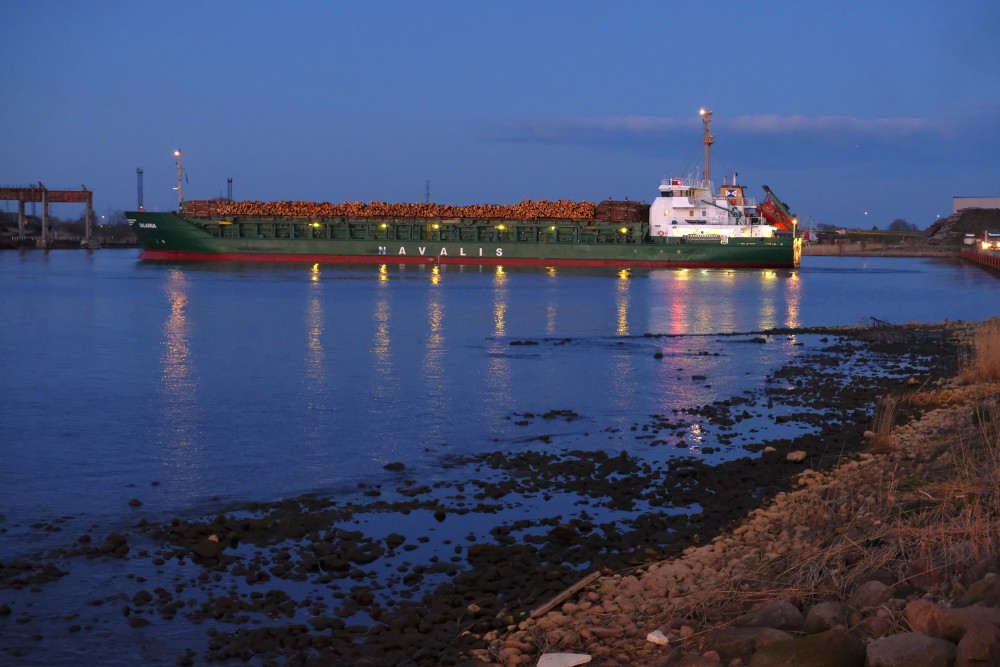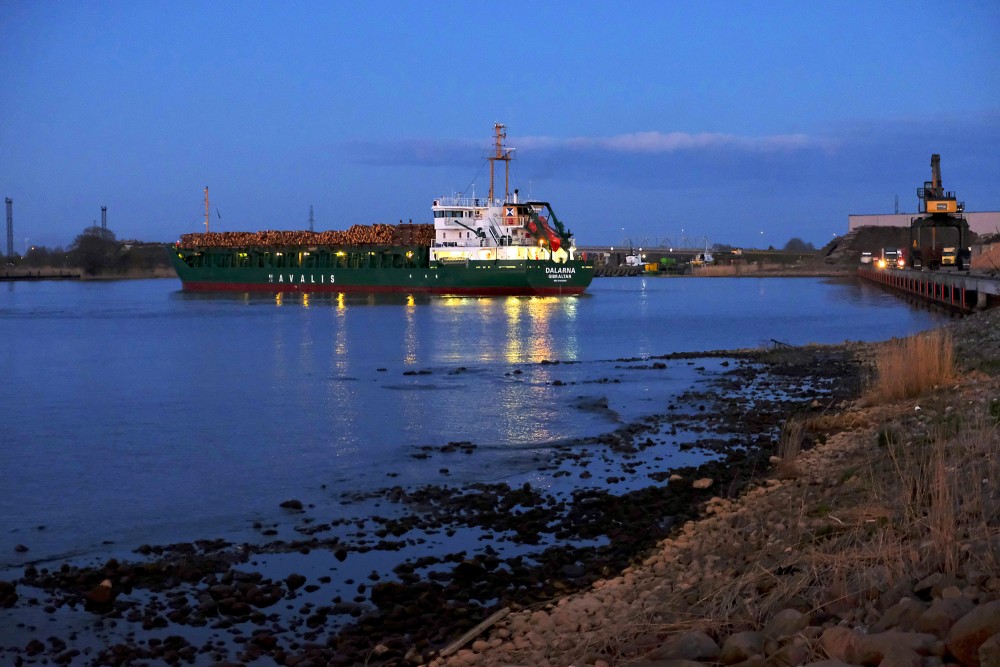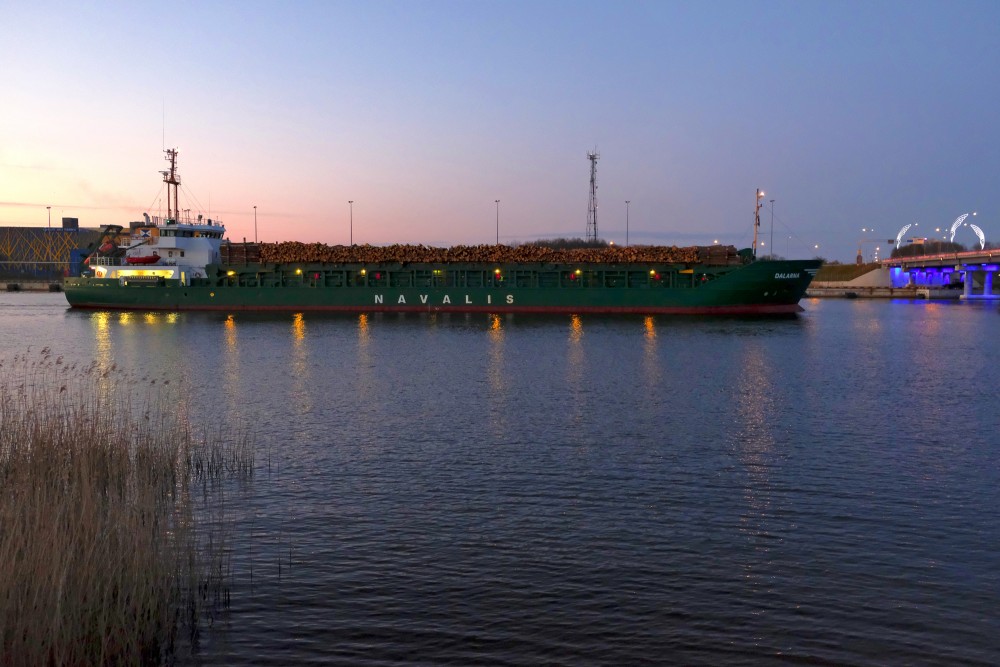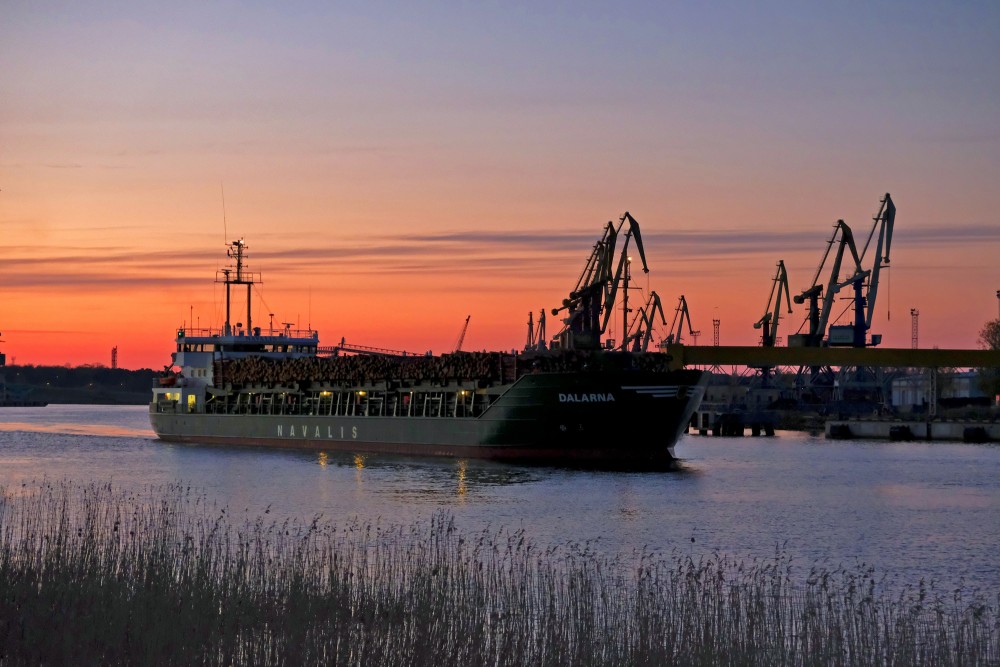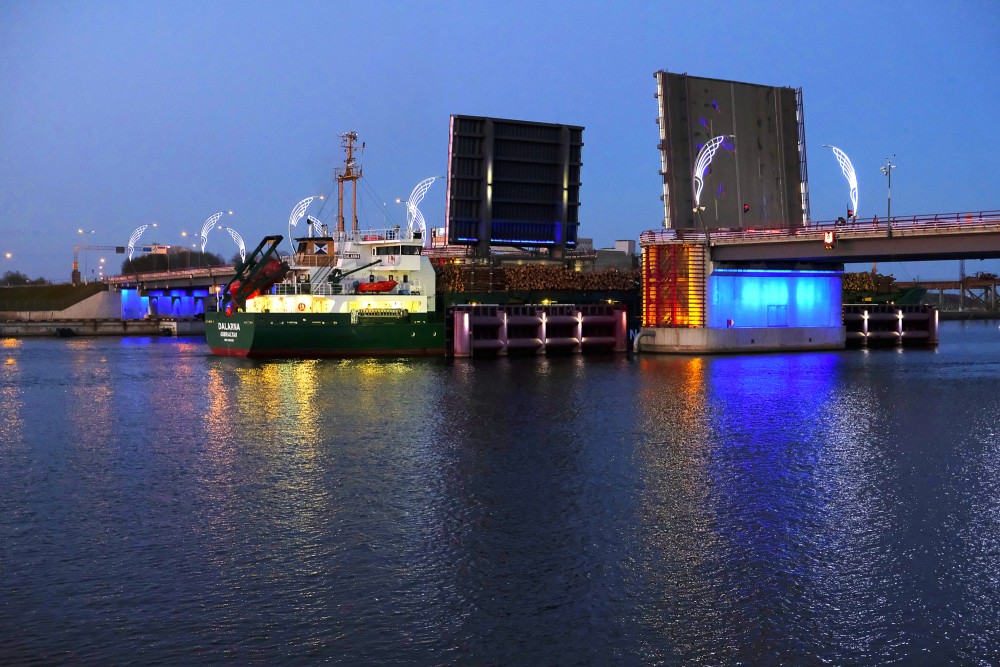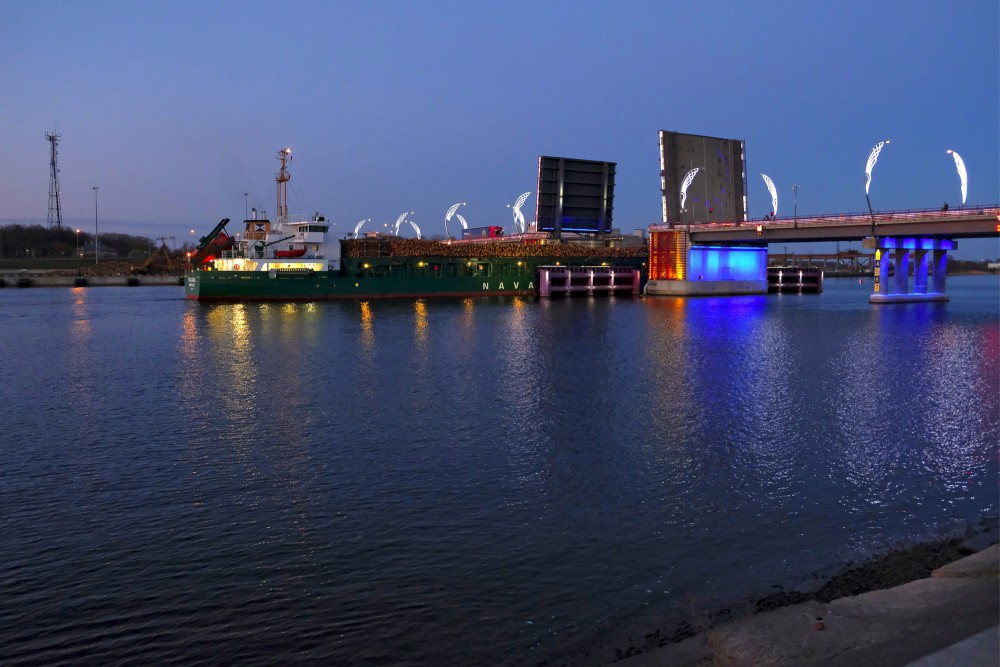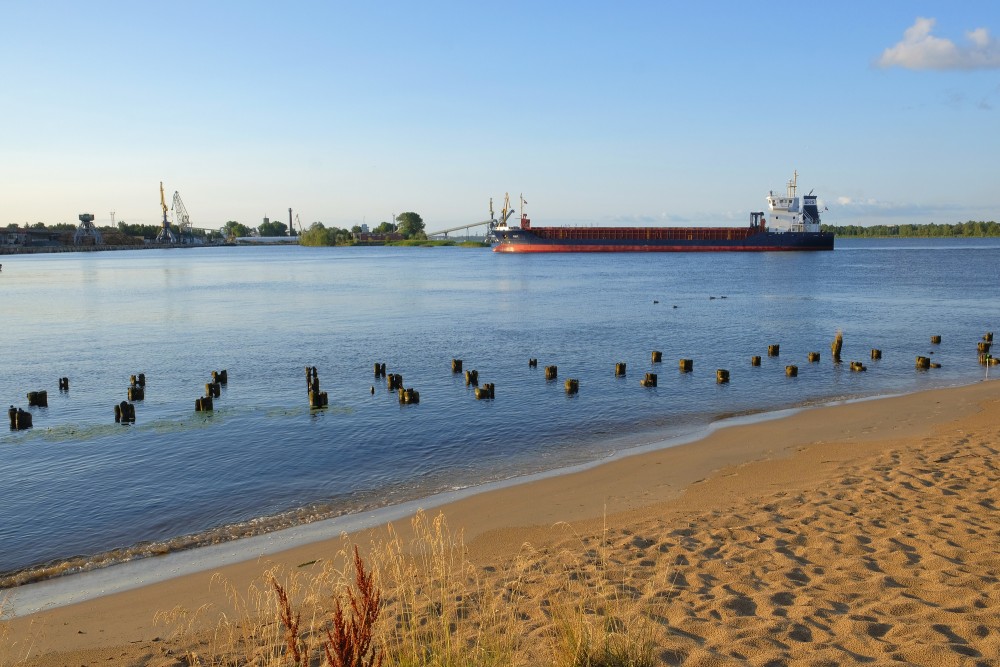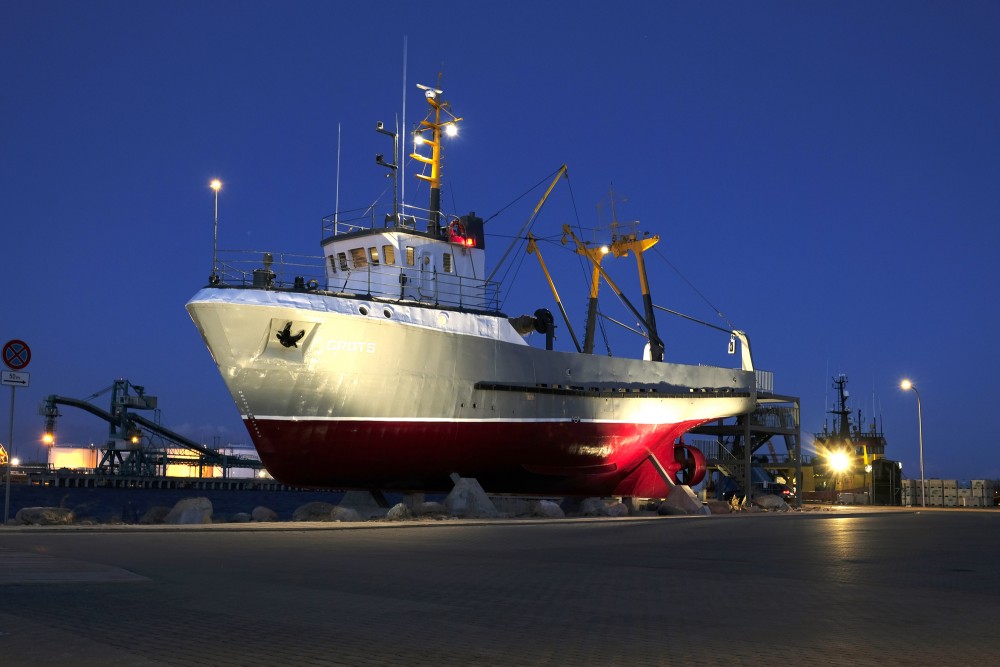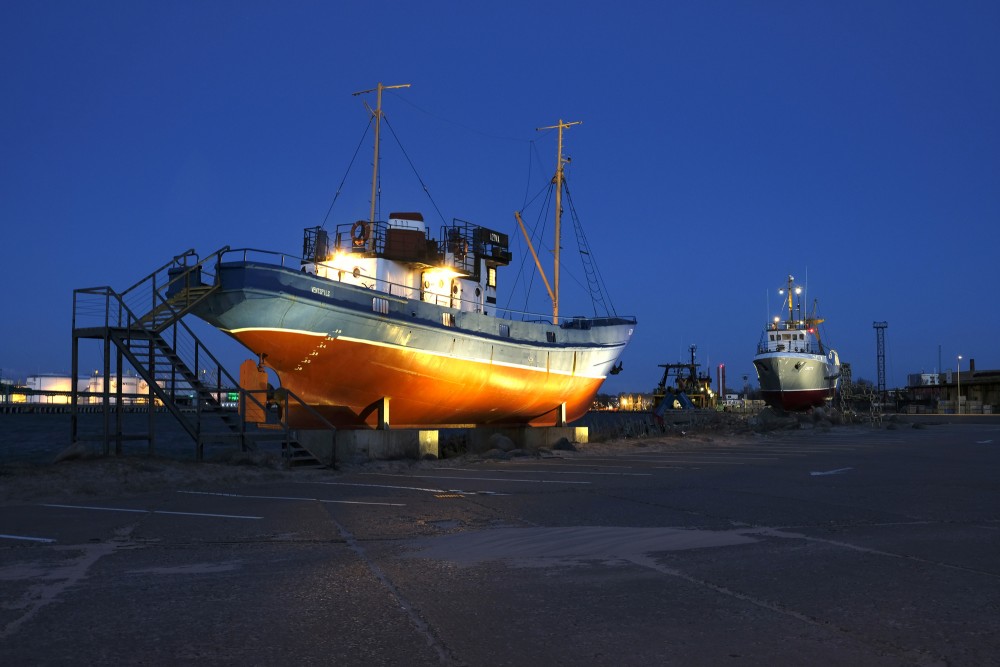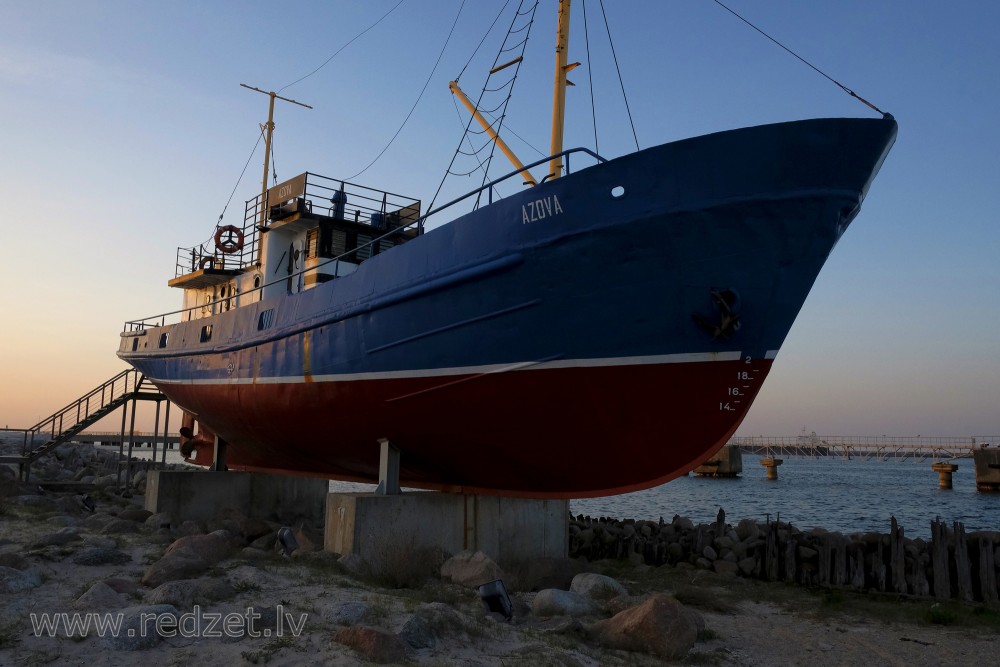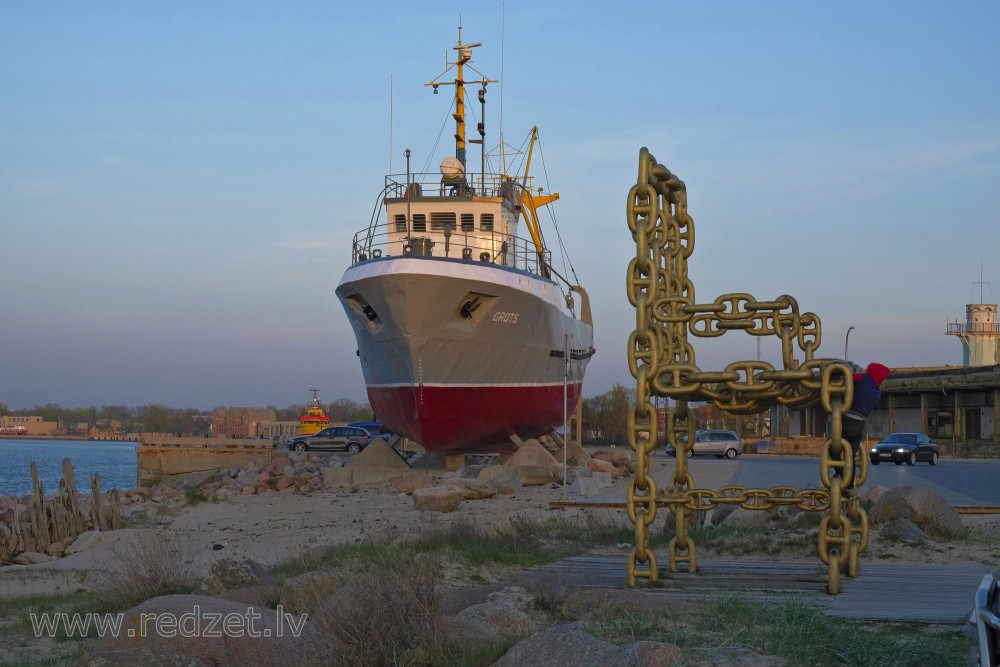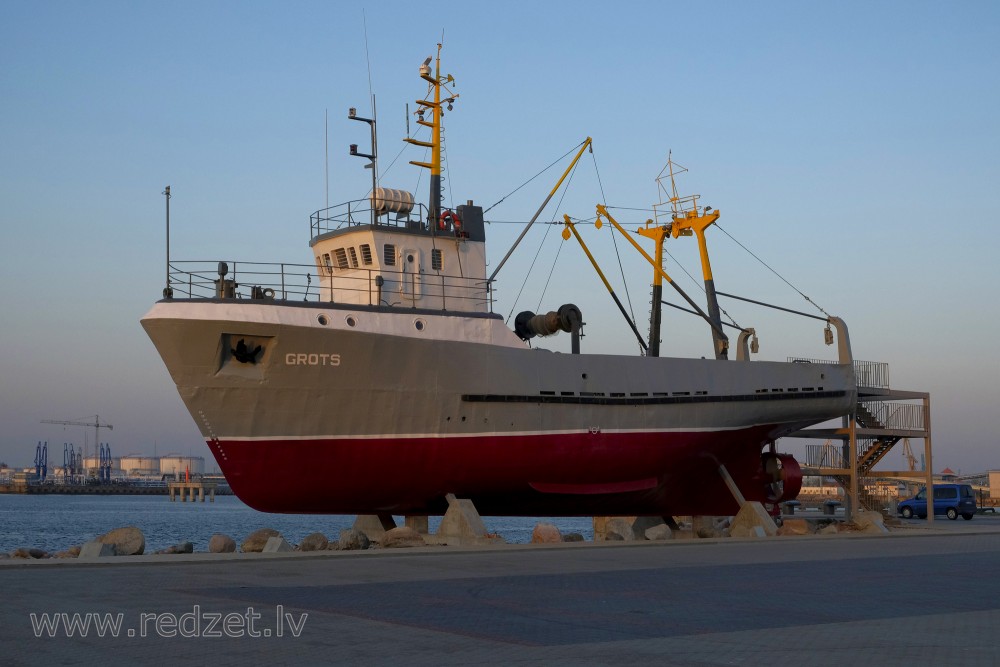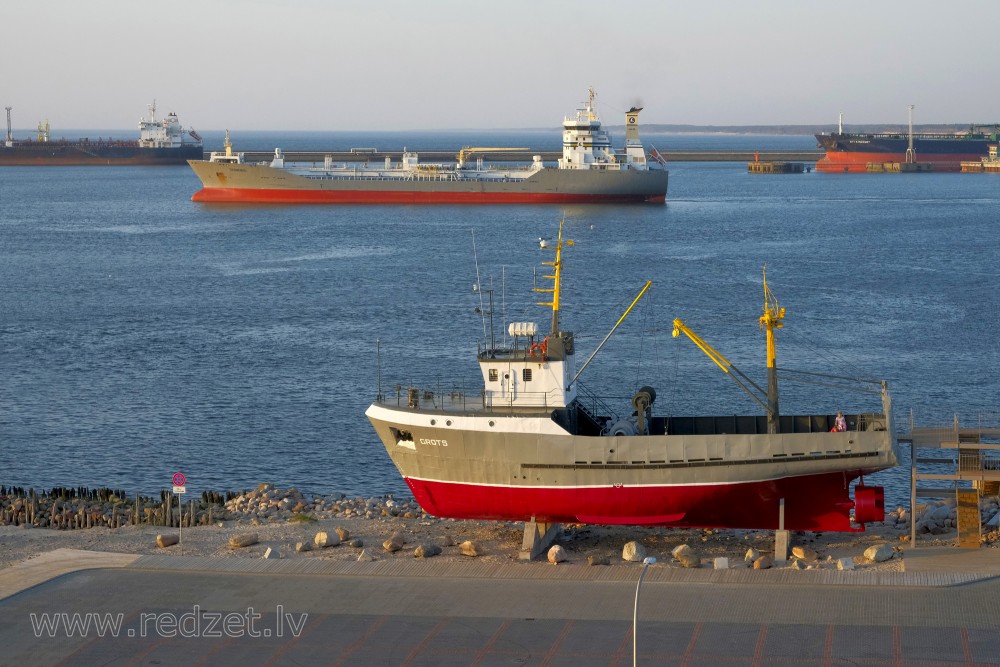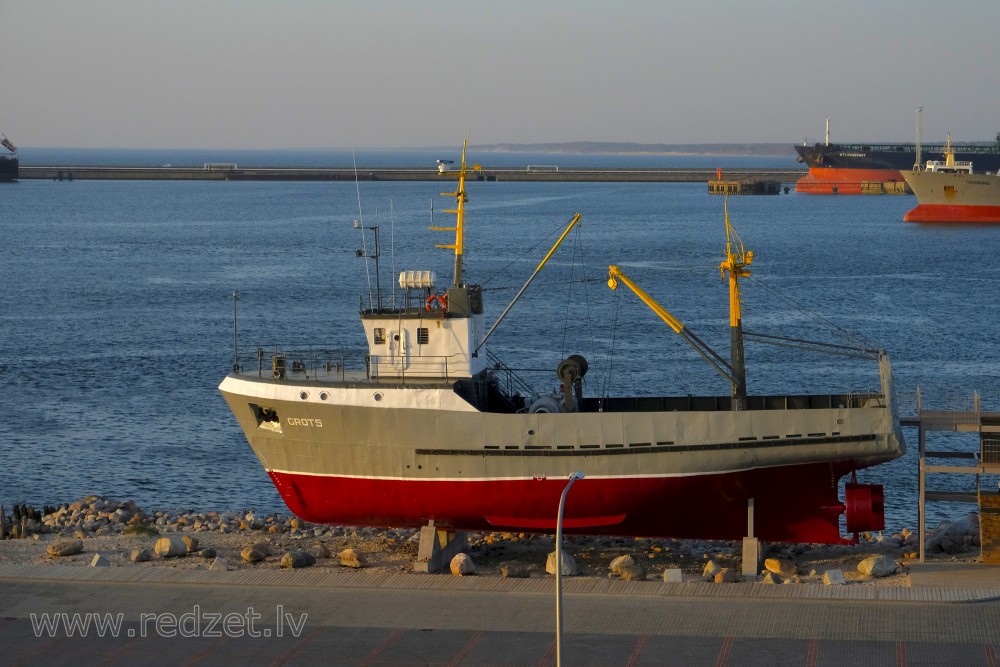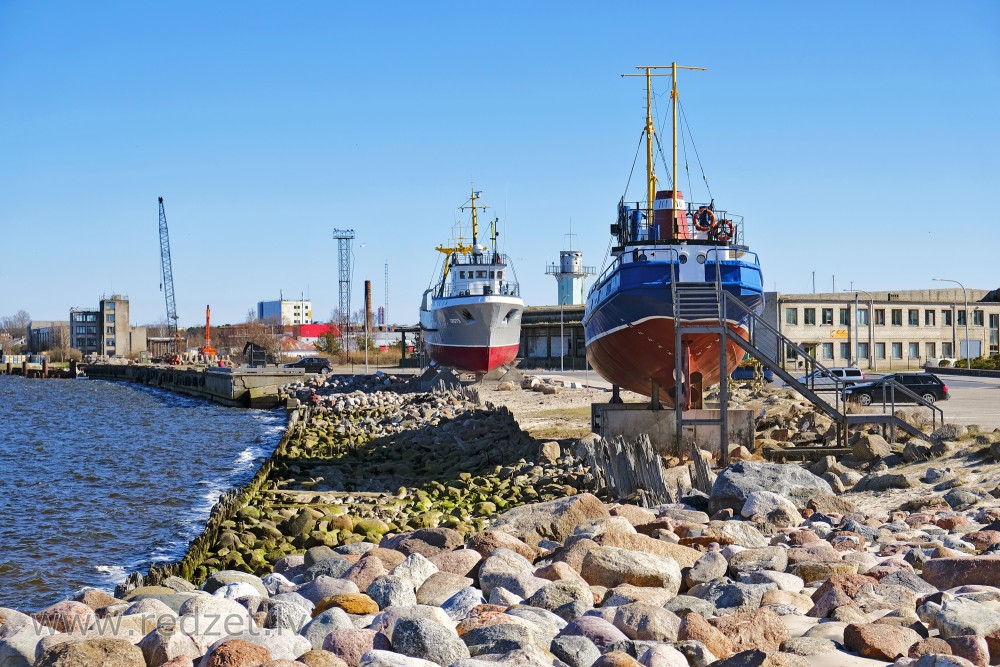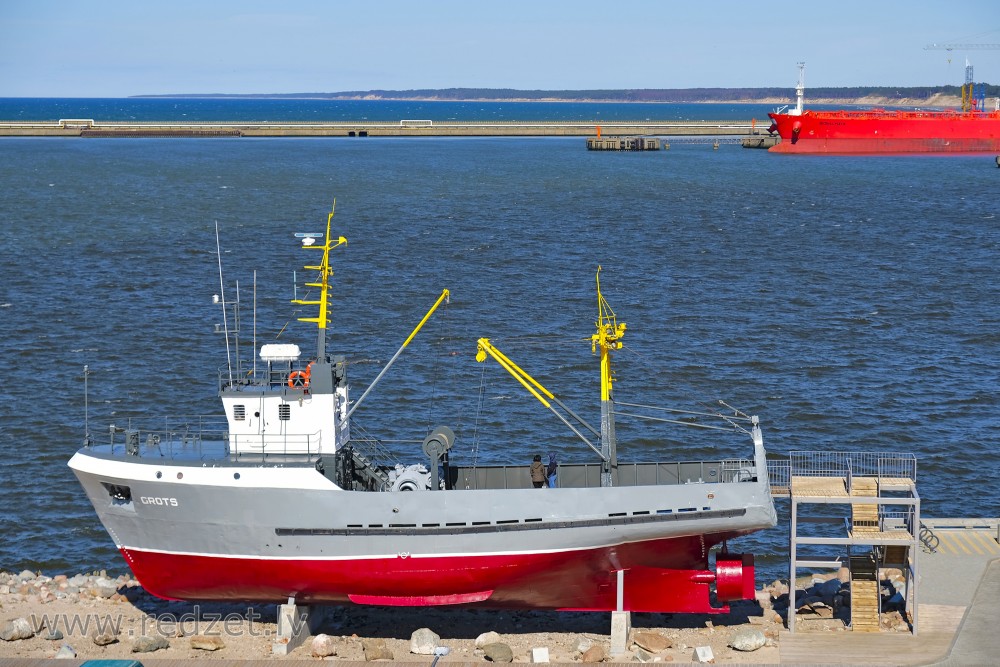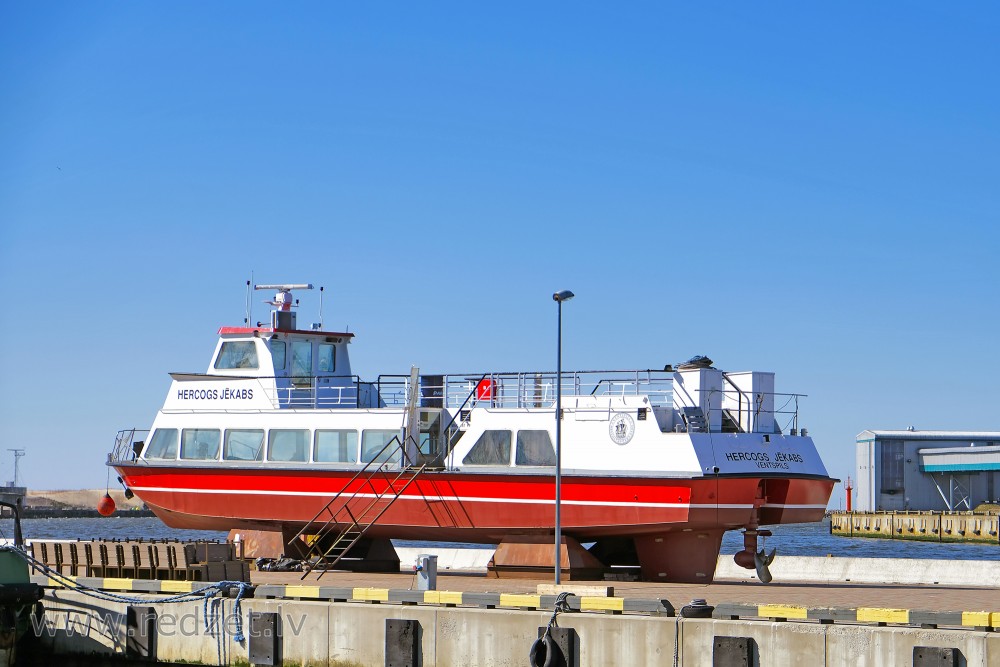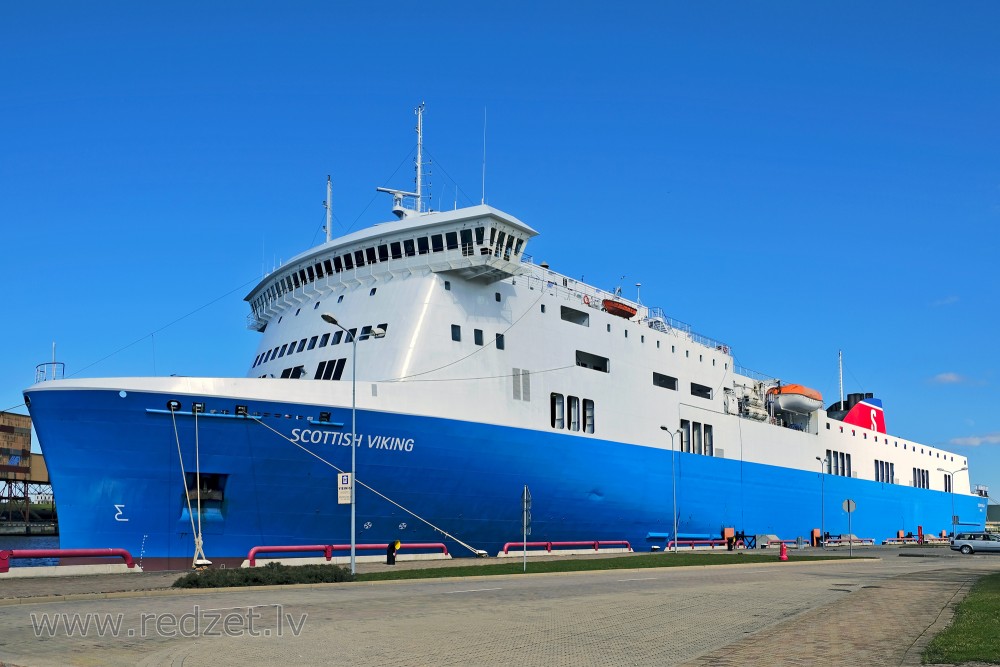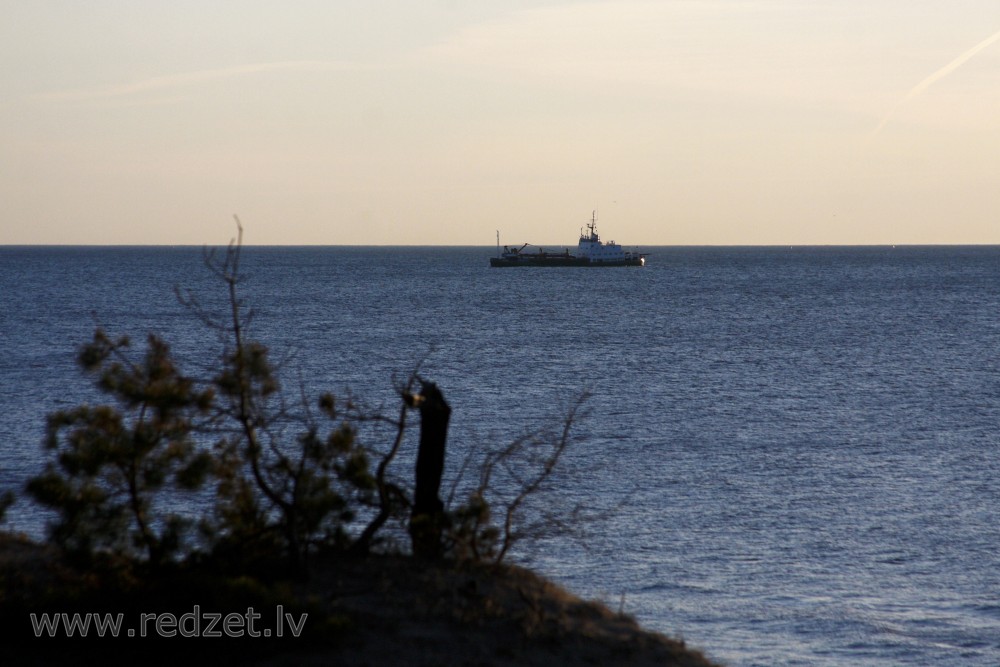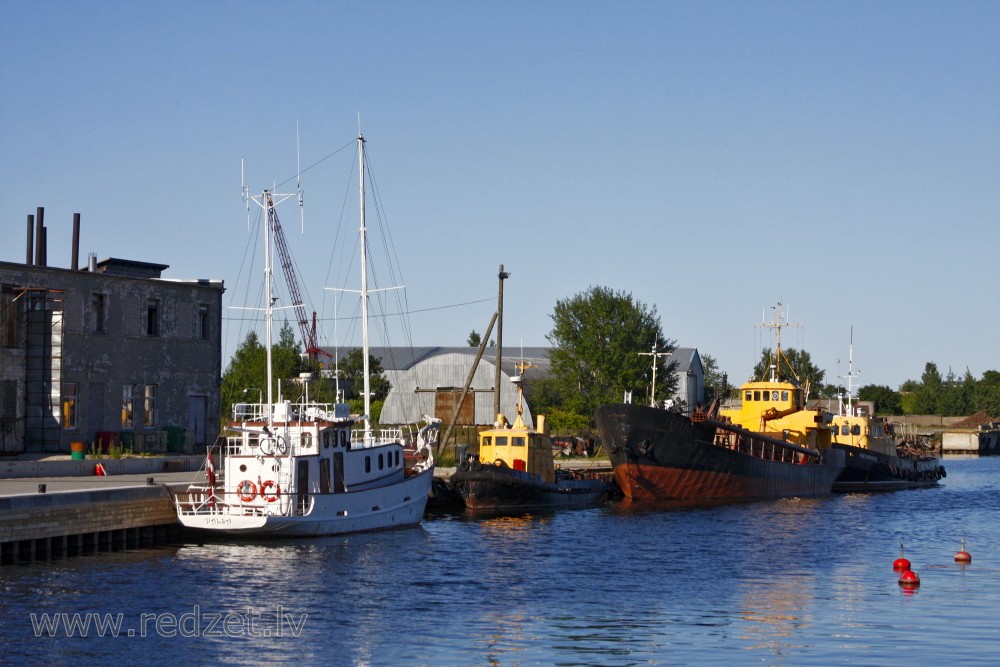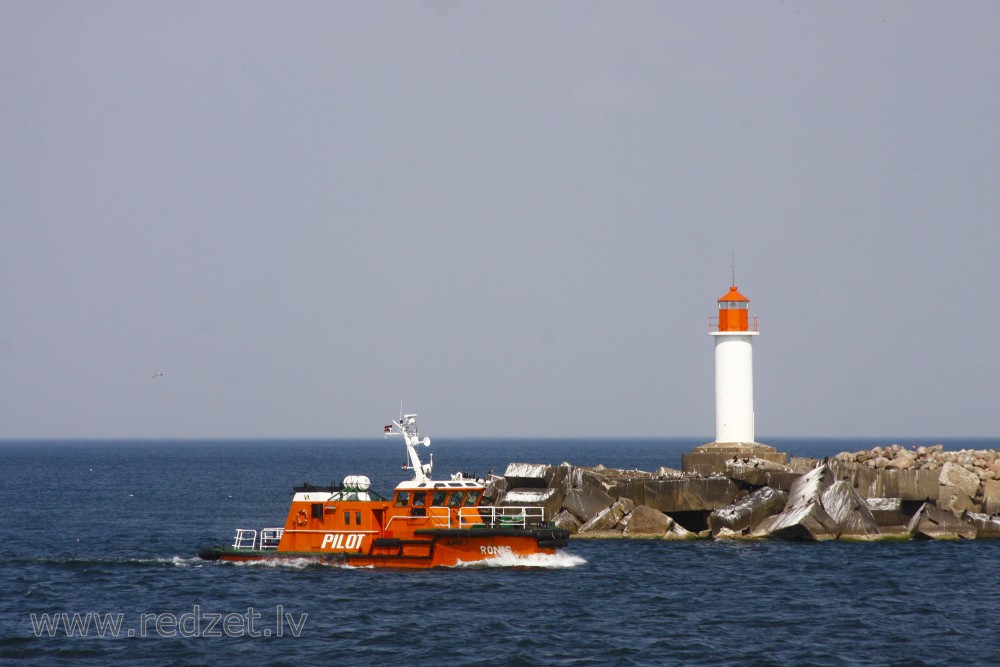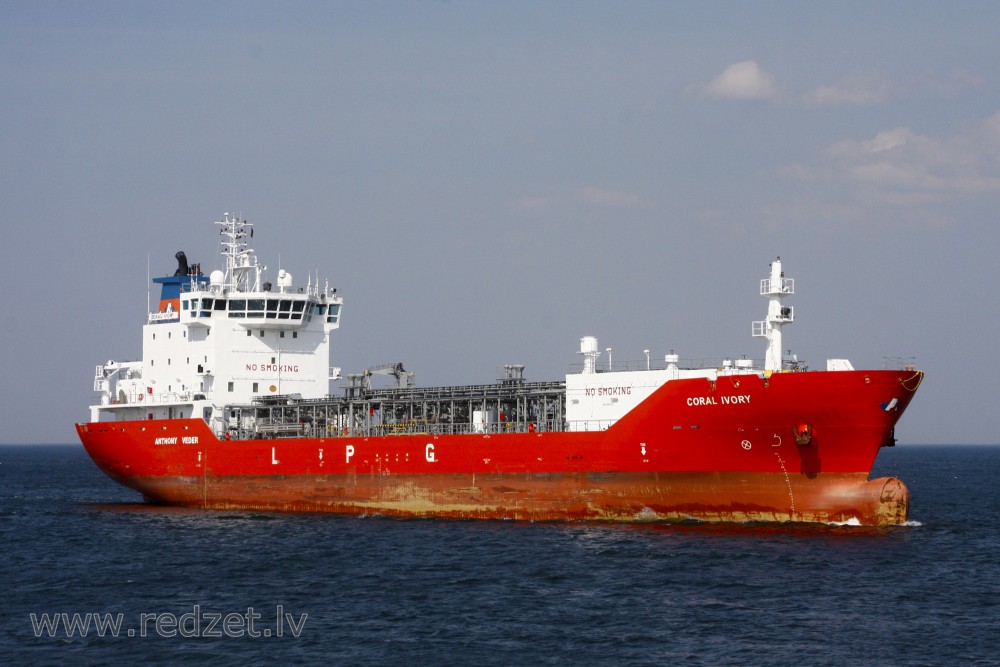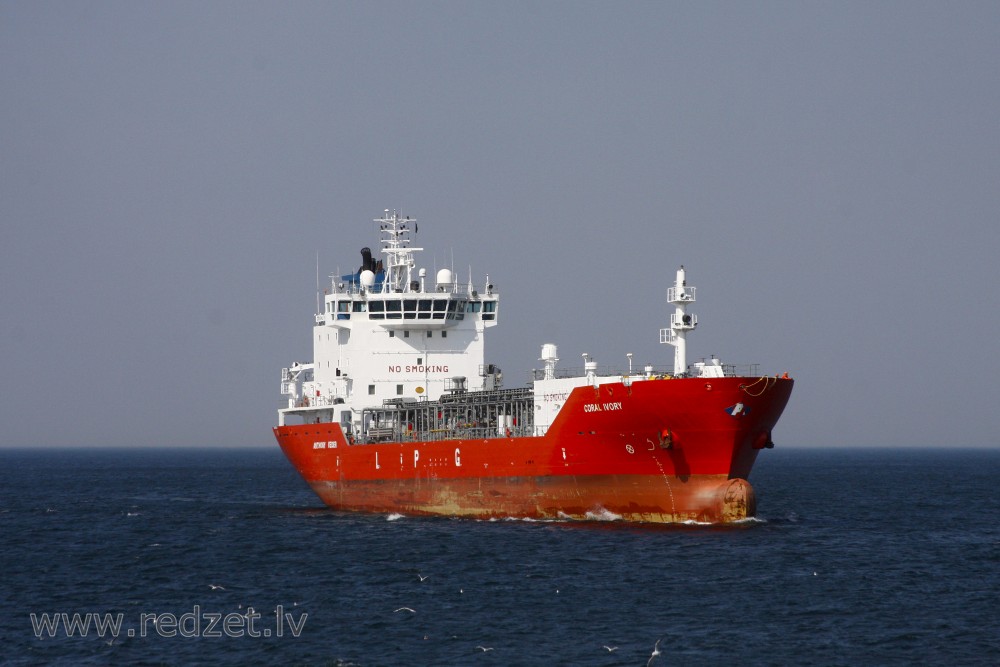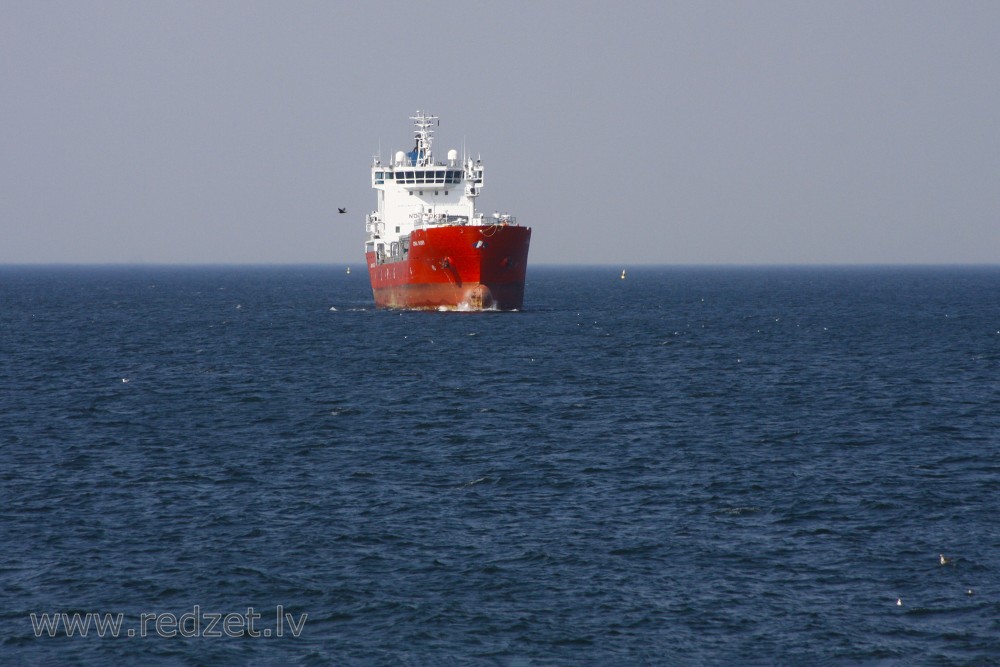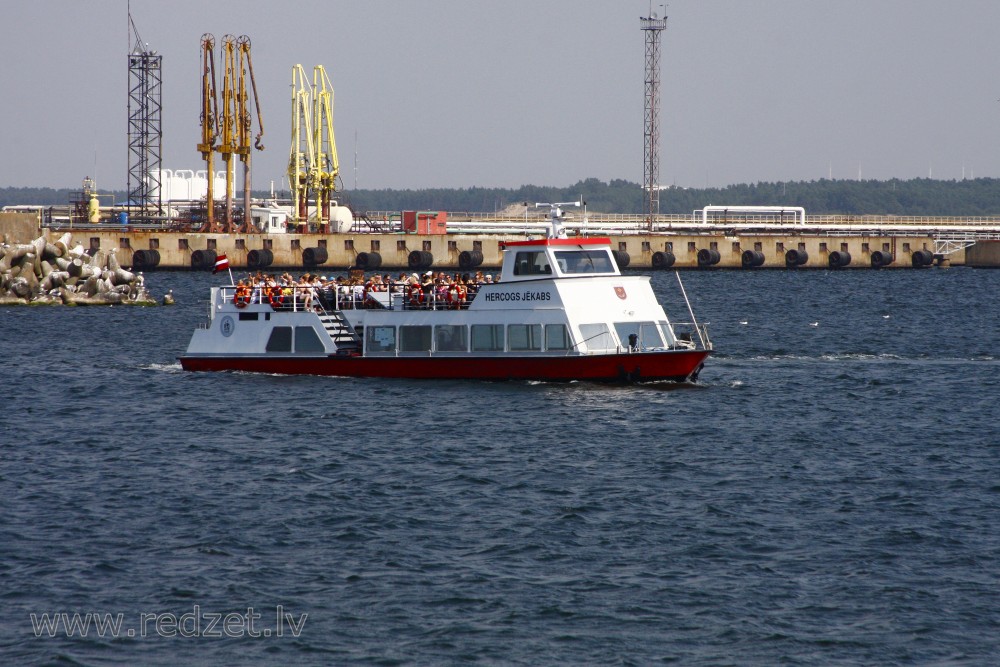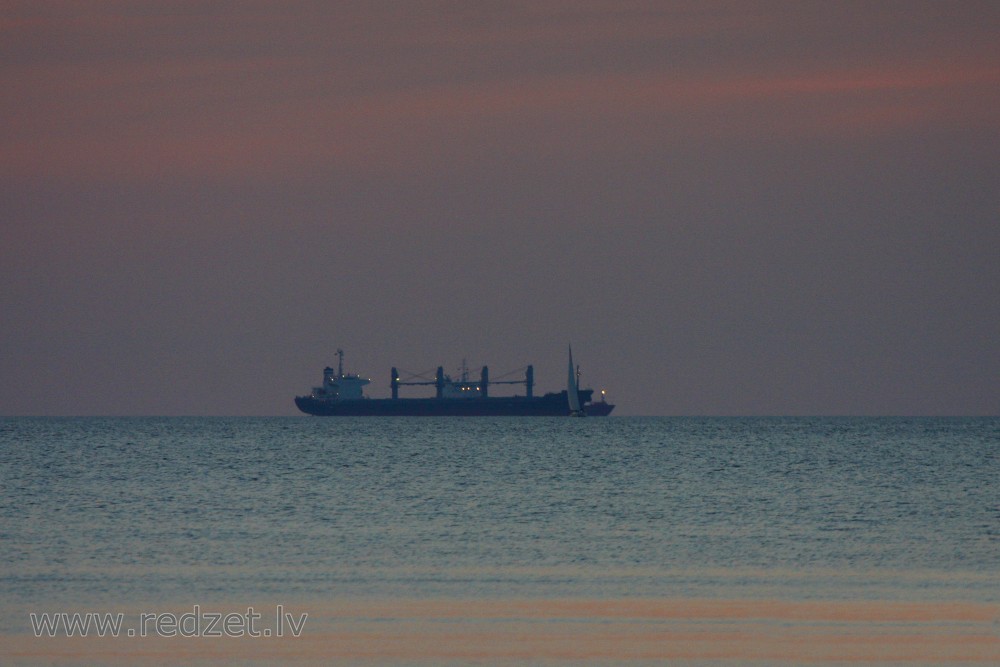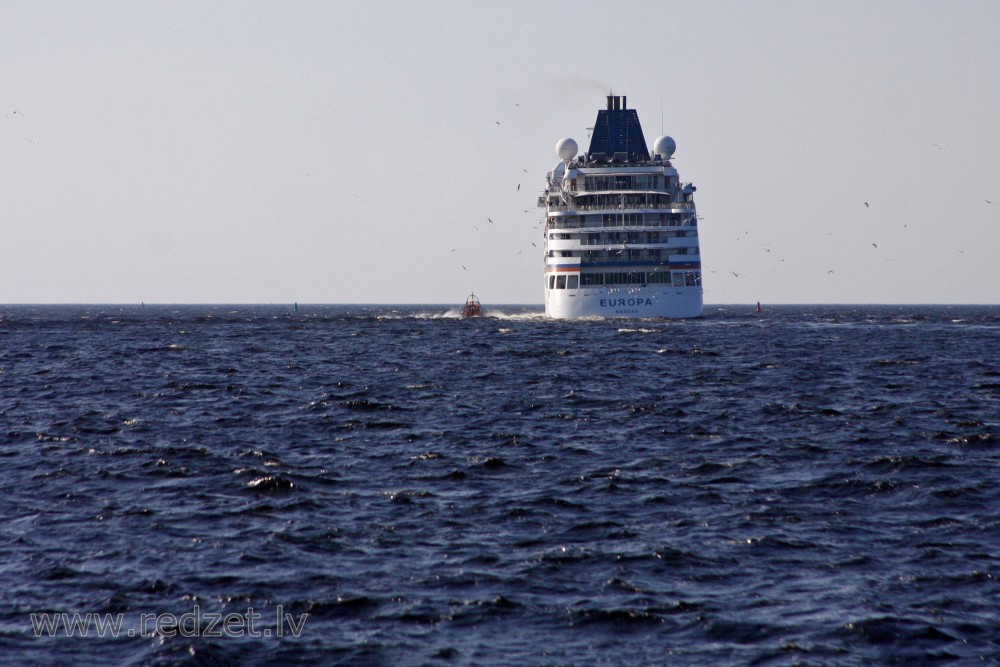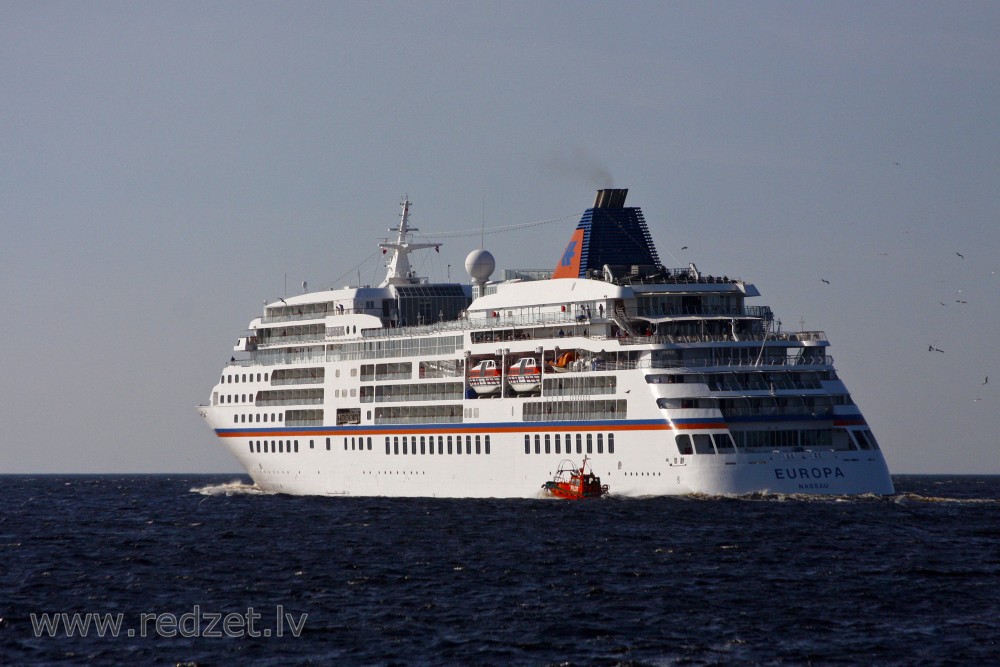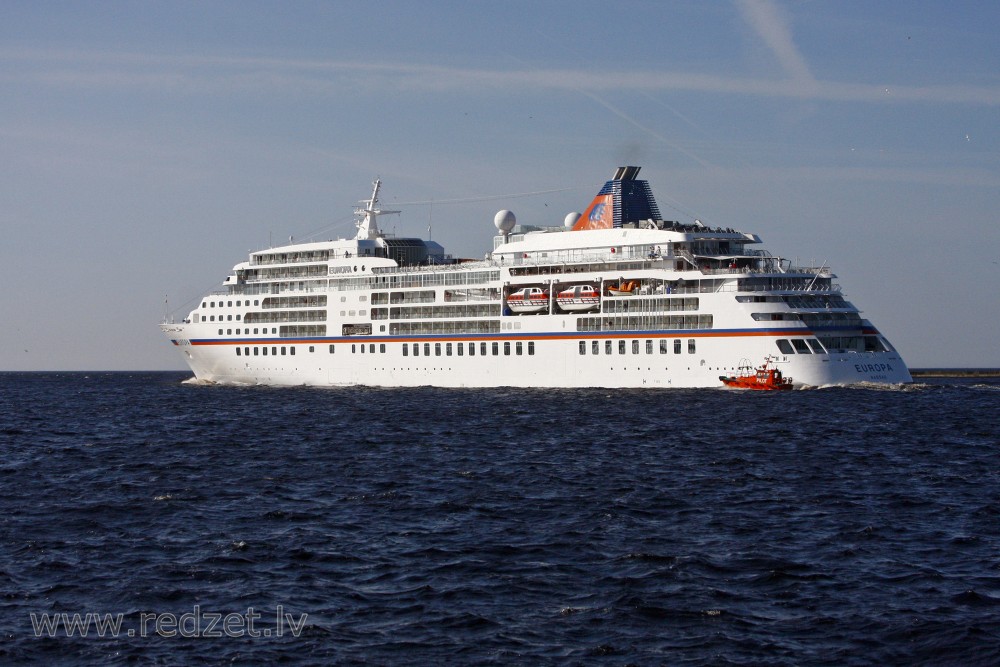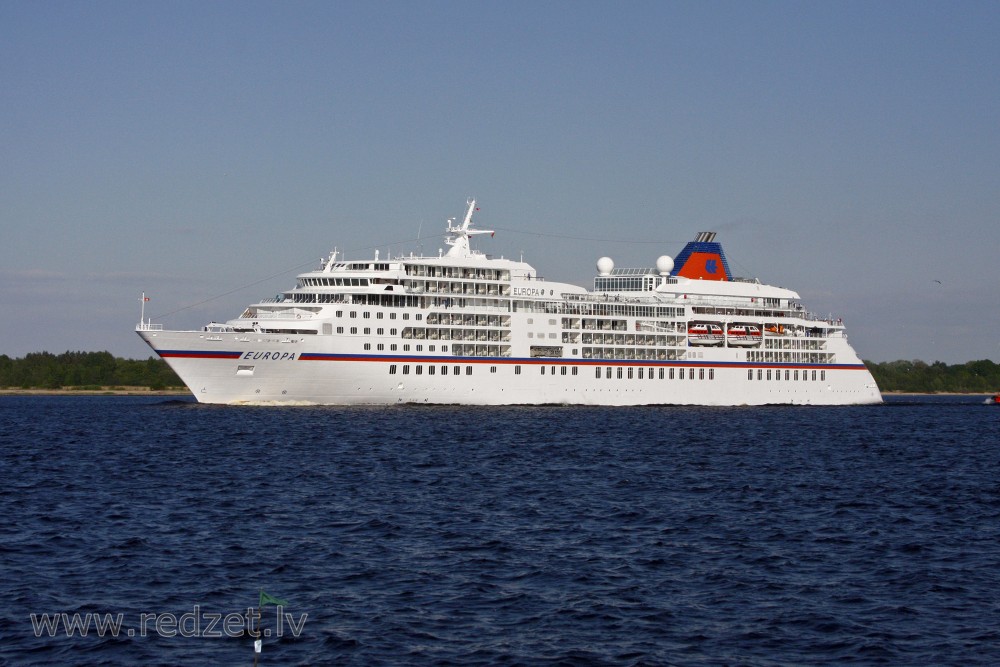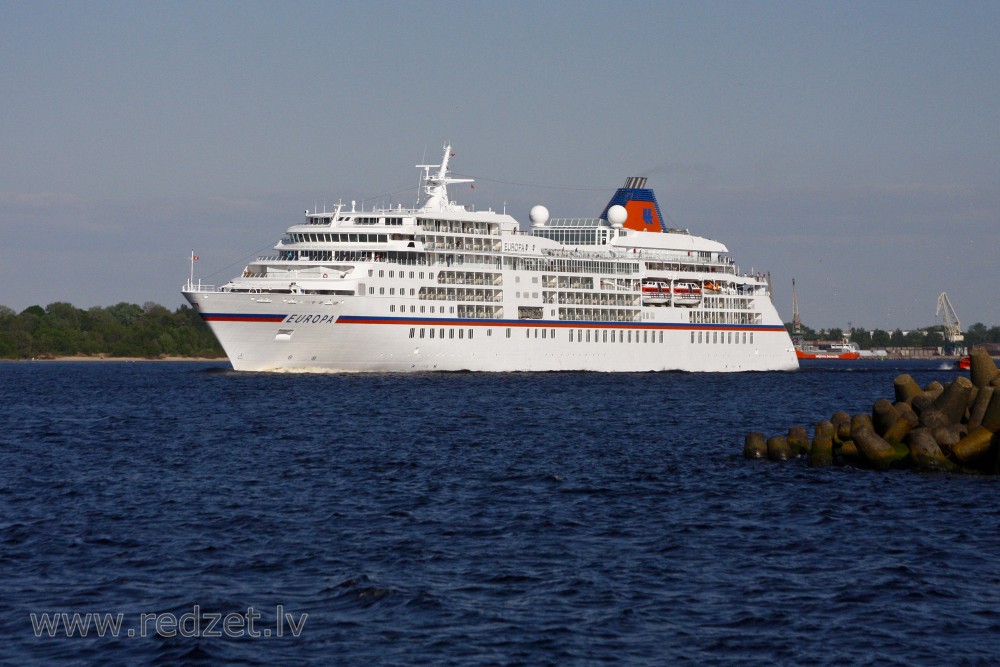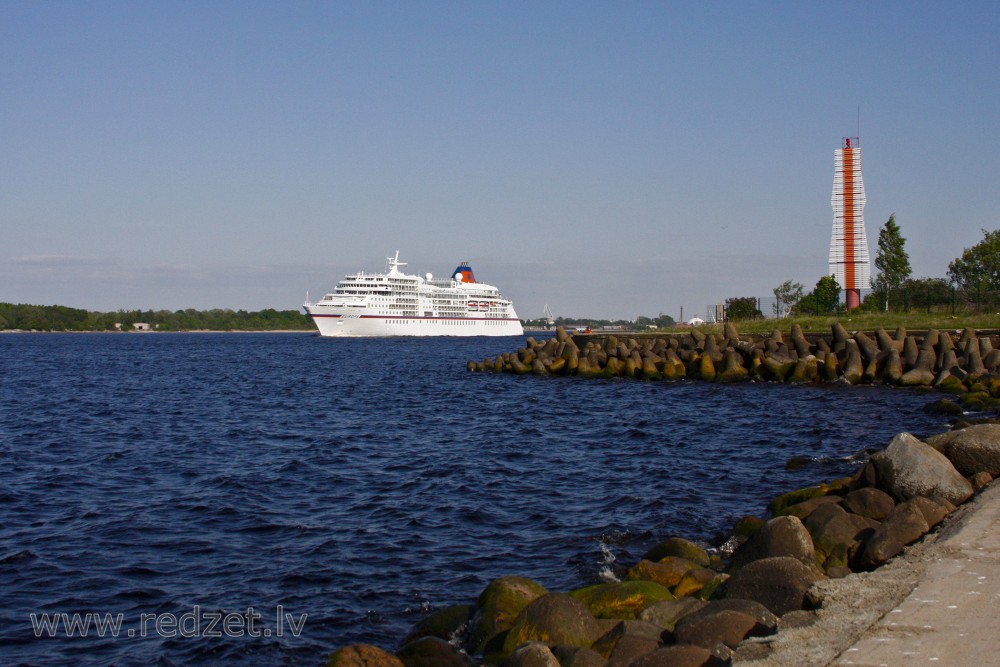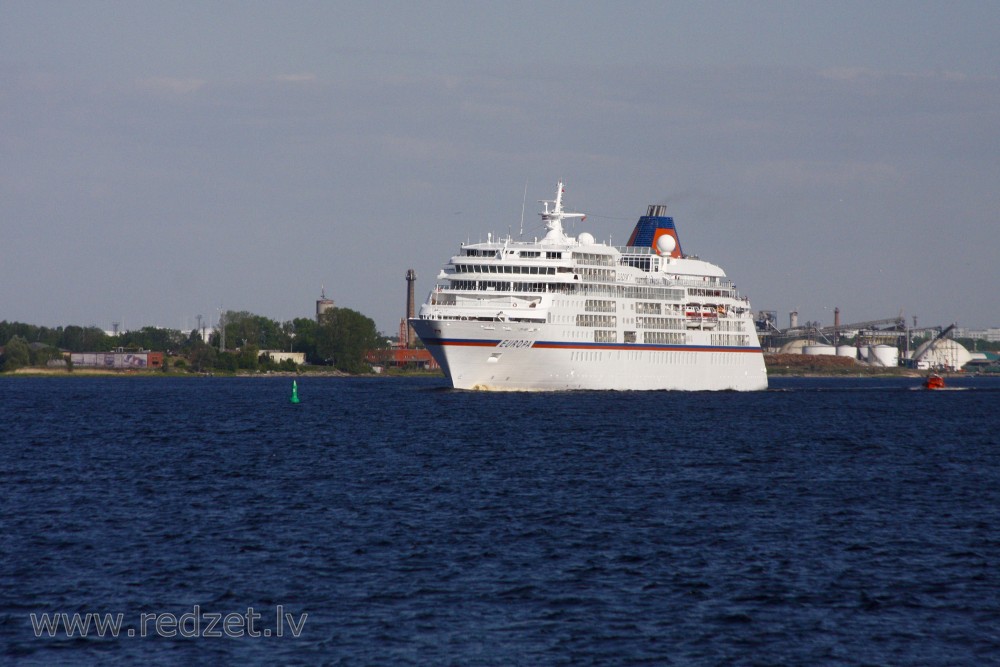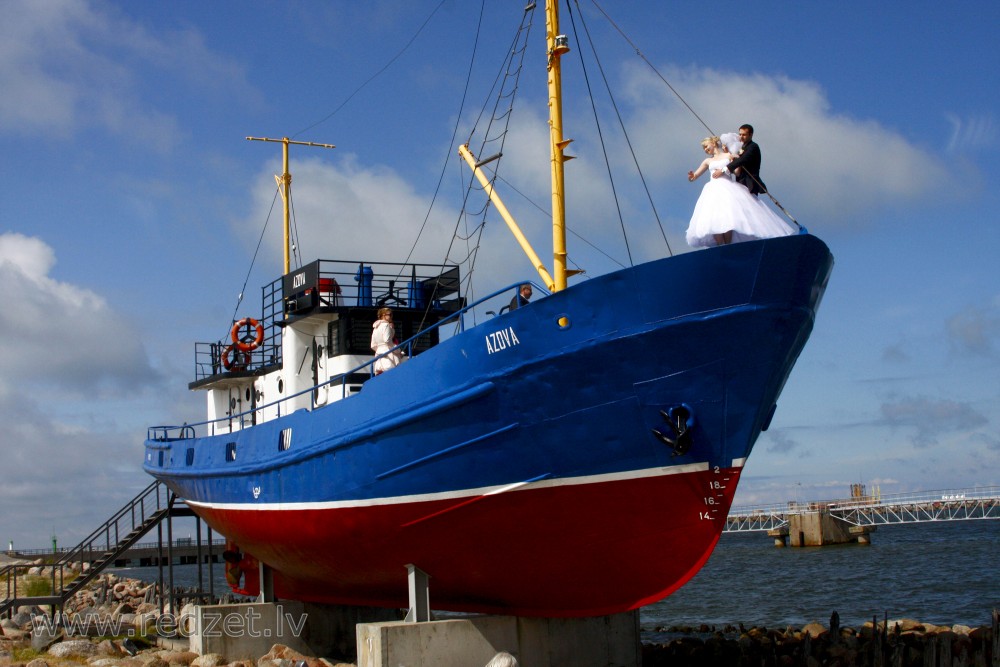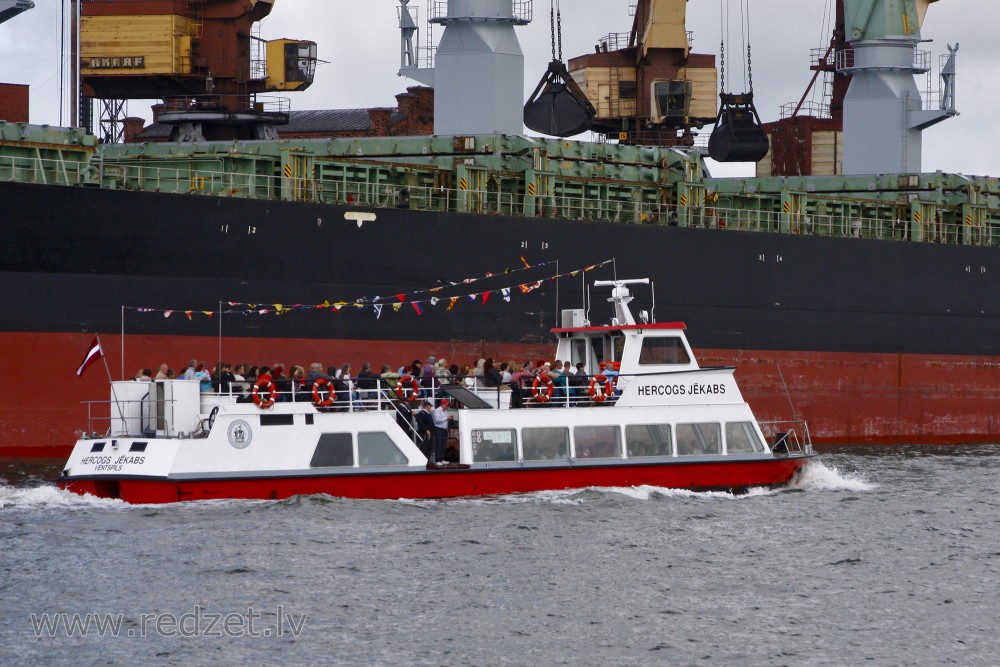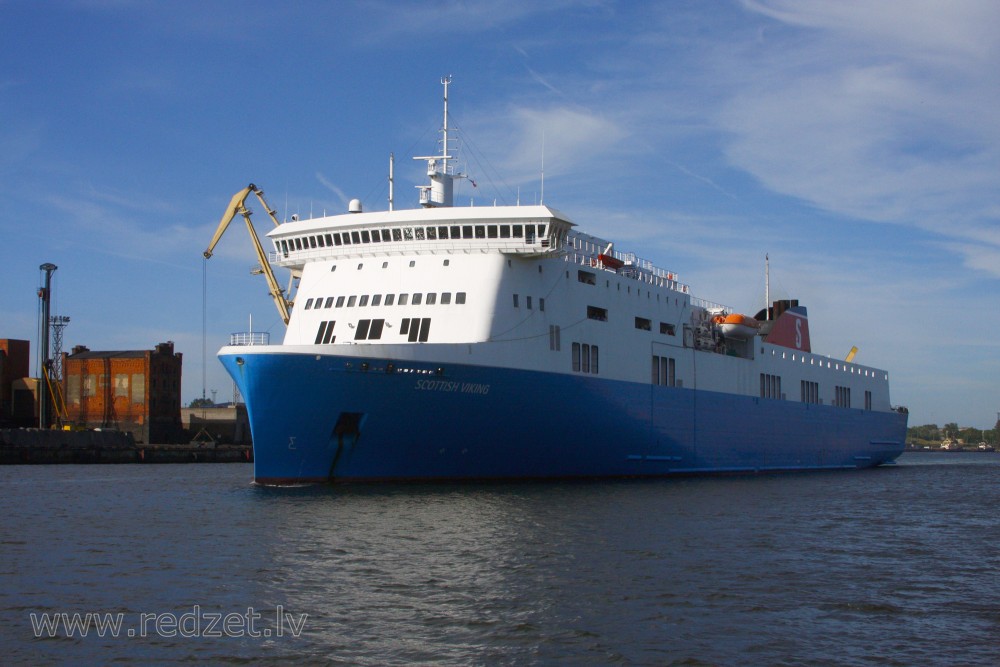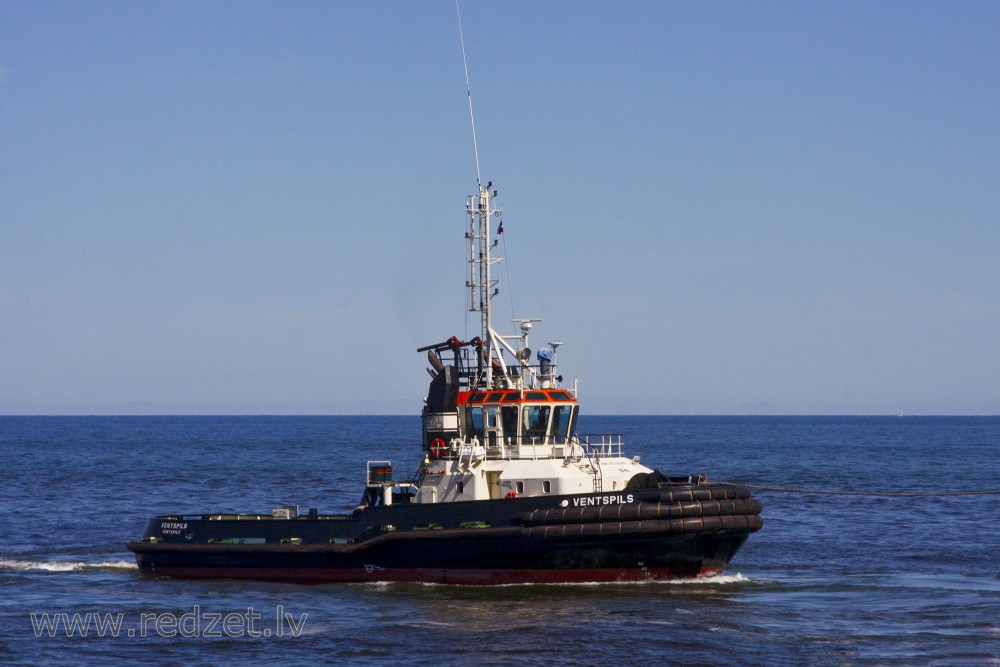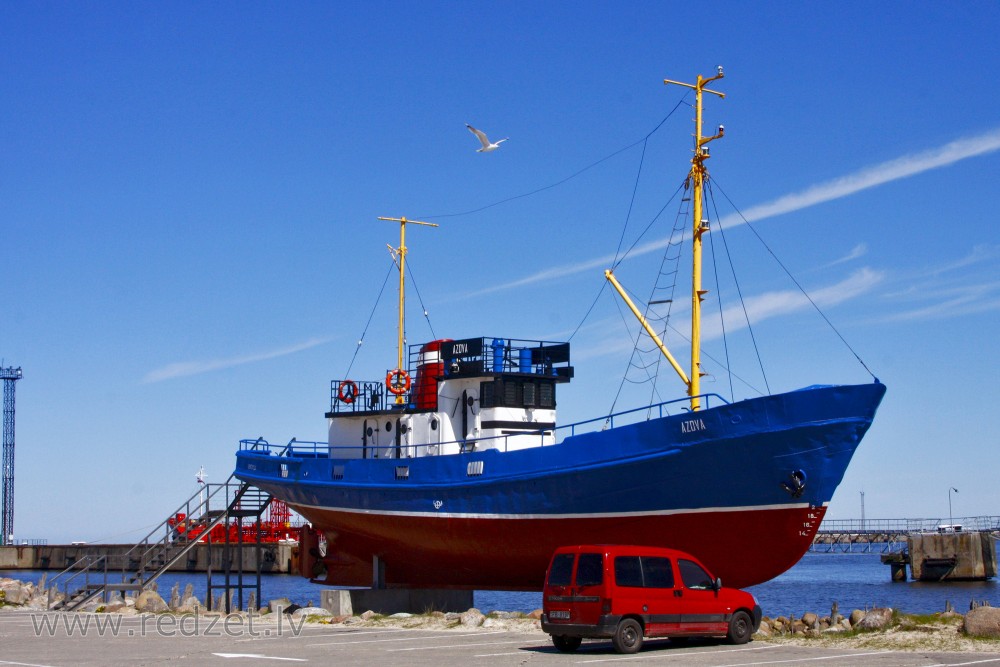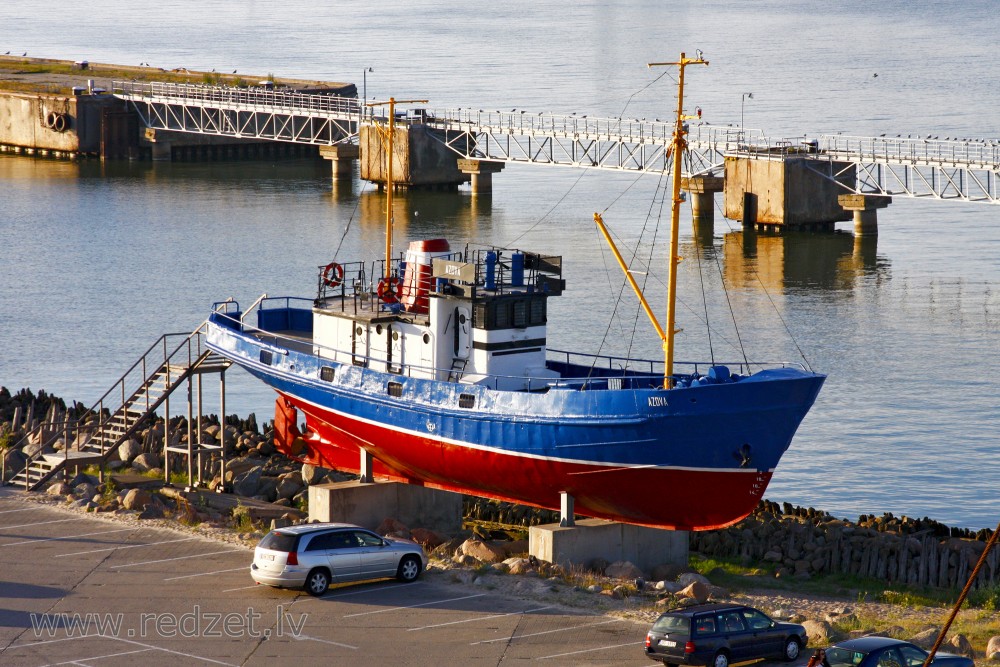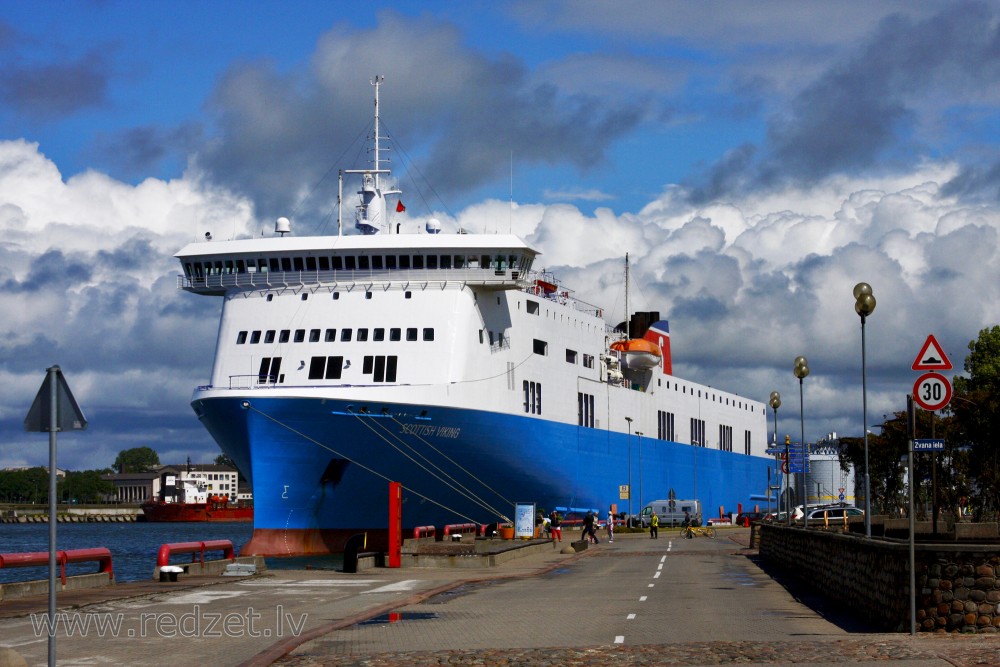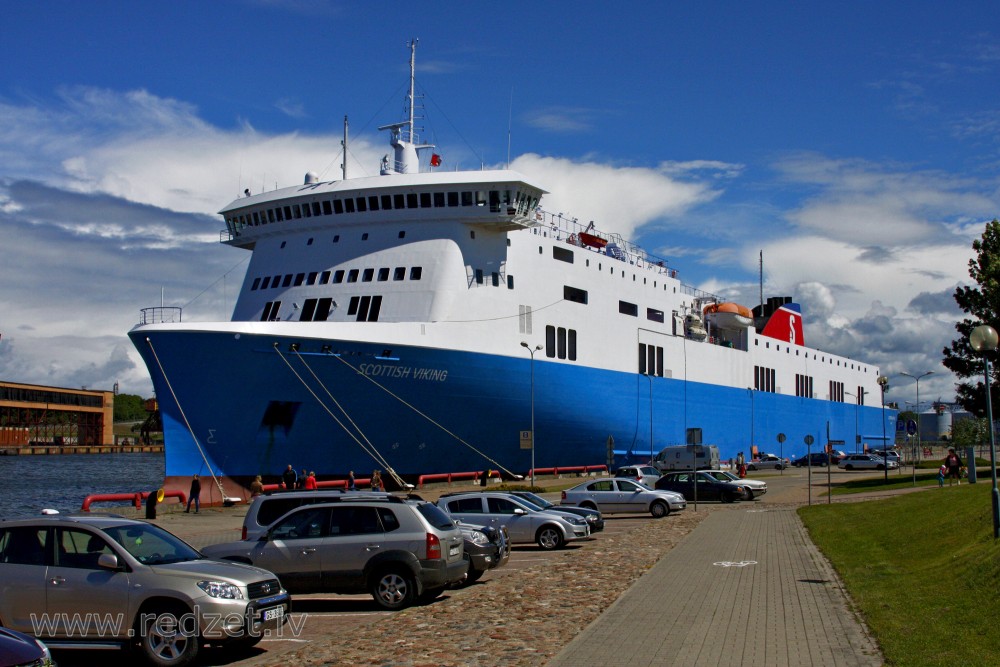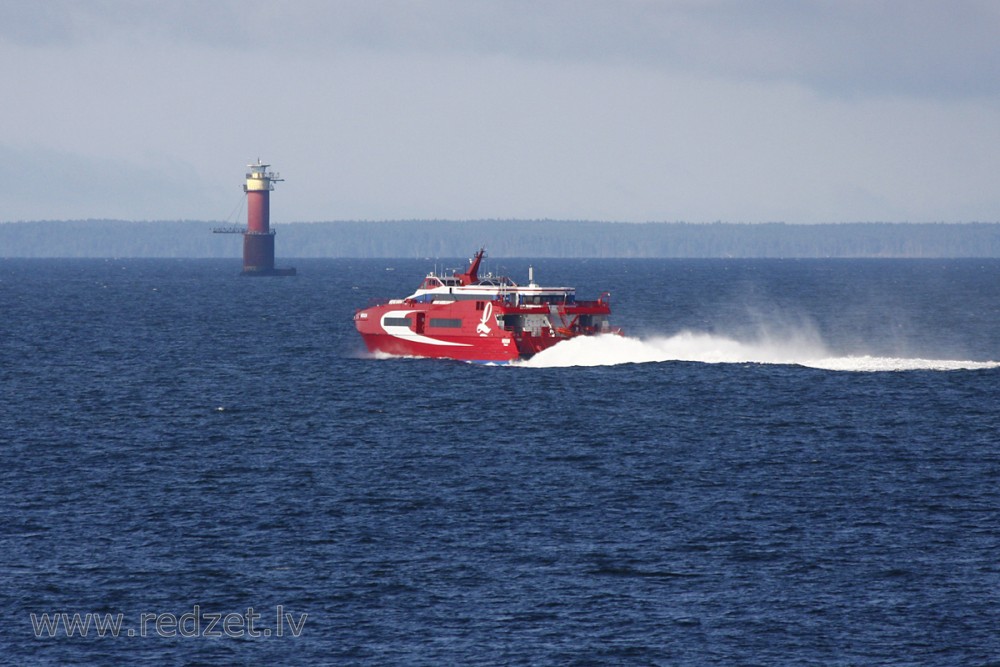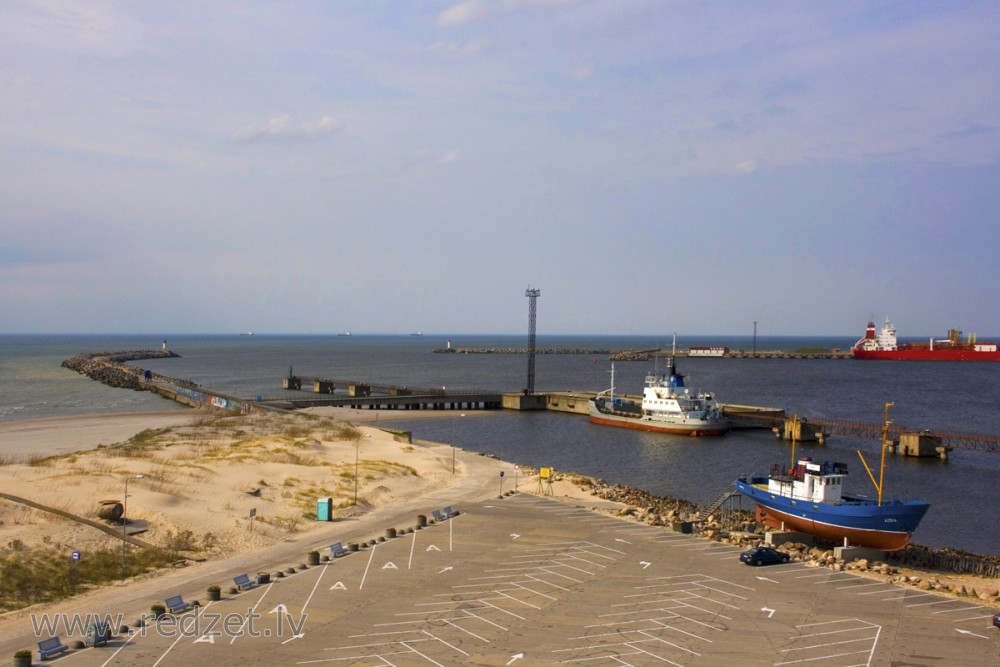Ship
A ship is a large watercraft that travels the world's oceans and other sufficiently deep waterways, carrying passengers or goods, or in support of specialized missions, such as defense, research and fishing. Historically, a "ship" was a sailing vessel with at least three square-rigged masts and a full bowsprit. Ships are generally distinguished from boats, based on size, shape, load capacity, and tradition.
Ships have been important contributors to human migration and commerce. They have supported the spread of colonization and the slave trade, but have also served scientific, cultural, and humanitarian needs. After the 15th century, new crops that had come from and to the Americas via the European seafarers significantly contributed to the world population growth. Ship transport is responsible for the largest portion of world commerce.
As of 2016, there were more than 49,000 merchant ships, totaling almost 1.8 billion dead weight tons. Of these 28% were oil tankers, 43% were bulk carriers, and 13% were container ships.
Nomenclature
Ships are generally larger than boats, but there is no universally accepted distinction between the two. Ships generally can remain at sea for longer periods of time than boats. A legal definition of ship from Indian case law is a vessel that carries goods by sea. A common notion is that a ship can carry a boat, but not vice versa. A US Navy rule of thumb is that ships heel towards the outside of a sharp turn, whereas boats heel towards the inside because of the relative location of the center of mass versus the center of buoyancy. American and British 19th Century maritime law distinguished "vessels" from other craft; ships and boats fall in one legal category, whereas open boats and rafts are not considered vessels.
In the Age of Sail, a full-rigged ship was a sailing vessel with at least three square-rigged masts and a full bowsprit; other types of vessel were also defined by their sailplan, e.g. barque, brigantine, etc.
A number of large vessels are usually referred to as boats. Submarines are a prime example. Other types of large vessel which are traditionally called boats are Great Lakes freighters, riverboats, and ferryboats. Though large enough to carry their own boats and heavy cargoes, these vessels are designed for operation on inland or protected coastal waters.
In most maritime traditions ships have individual names, and modern ships may belong to a ship class often named after its first ship. In the northern parts of Europe and America a ship is traditionally referred to with a female grammatical gender, represented in English with the pronoun "she", even if named after a man. This is not universal usage and some English language journalistic style guides advise using "it" as referring to ships with female pronouns can be seen as offensive and outdated. In many documents the ship name is introduced with a ship prefix being an abbreviation of the ship class, for example "MS" (motor ship) or "SV" (sailing vessel), making it easier to distinguish a ship name from other individual names in a text.
Types of ships
Because ships are constructed using the principles of naval architecture that require same structural components, their classification is based on their function such as that suggested by Paulet and Presles, which requires modification of the components. The categories accepted in general by naval architects are:
- High-speed craft – Multihulls including wave piercers, small-waterplane-area twin hull (SWATH), surface effect ships and hovercraft, hydrofoil, wing in ground effect craft (WIG).
- Off shore oil vessels – Platform supply vessel, pipe layers, accommodation and crane barges, non and semi-submersible drilling rigs, production platforms, floating production storage and offloading units.
- Fishing vessels
- Motorised fishing trawlers, trap setters, seiners, longliners, trollers & factory ships.
- Traditional sailing and rowed fishing vessels and boats used for handline fishing
- Harbour work craft
- Cable layers
- Tugboats, dredgers, salvage vessels, tenders, Pilot boats.
- Floating dry docks, floating cranes, lightership.
- Dry cargo ships – tramp freighters, bulk carriers, cargo liners, container vessels, barge carriers, Ro-Ro ships, refrigerated cargo ships, timber carriers, livestock & light vehicle carriers.
- Liquid cargo ships – Oil tankers, liquefied gas carriers, chemical carriers.
- Passenger vessels
- Liners, cruise and Special Trade Passenger (STP) ships
- Cross-channel, coastal and harbour ferries.
- Luxury & cruising yachts
- Sail training and multi-masted ships
- Recreational boats and craft – rowed, masted and motorised craft
- Special-purpose vessels – weather and research vessels, deep sea survey vessels, and icebreakers.
- Submersibles – industrial exploration, scientific research, tourist and hydrographic survey.
- Warships and other surface combatants – aircraft carriers, destroyers, frigates, corvettes, minesweepers, etc.
Some of these are discussed in the following sections.
Freshwater
Freshwater shipping may occur on lakes, rivers and canals. Ships designed for those venues may be specially adapted to the widths and depths of specific waterways. Examples of freshwater waterways that are navigable in part by large vessels include the Danube, Mississippi, Rhine, Yangtze and Amazon Rivers, and the Great Lakes.
Great Lakes
Lake freighters, also called lakers, are cargo vessels that ply the Great Lakes. The most well-known is SS Edmund Fitzgerald, the latest major vessel to be wrecked on the Lakes. These vessels are traditionally called boats, not ships. Visiting ocean-going vessels are called "salties." Because of their additional beam, very large salties are never seen inland of the Saint Lawrence Seaway. Because the smallest of the Soo Locks is larger than any Seaway lock, salties that can pass through the Seaway may travel anywhere in the Great Lakes. Because of their deeper draft, salties may accept partial loads on the Great Lakes, "topping off" when they have exited the Seaway. Similarly, the largest lakers are confined to the Upper Lakes (Superior, Michigan, Huron, Erie) because they are too large to use the Seaway locks, beginning at the Welland Canal that bypasses the Niagara River.
Since the freshwater lakes are less corrosive to ships than the salt water of the oceans, lakers tend to last much longer than ocean freighters. Lakers older than 50 years are not unusual, and as of 2005, all were over 20 years of age.
SS St. Marys Challenger, built in 1906 as William P Snyder, was the oldest laker still working on the Lakes until its conversion into a barge starting in 2013. Similarly, E.M. Ford, built in 1898 as Presque Isle, was sailing the lakes 98 years later in 1996. As of 2007 E.M. Ford was still afloat as a stationary transfer vessel at a riverside cement silo in Saginaw, Michigan.
Seagoing commercial vessels
Commercial vessels or merchant ships can be divided into four broad categories: fishing, cargo ships, passenger ships, and special-purpose ships. The UNCTAD review of maritime transport categorizes ships as: oil tankers, bulk (and combination) carriers, general cargo ships, container ships, and "other ships", which includes "liquefied petroleum gas carriers, liquefied natural gas carriers, parcel (chemical) tankers, specialized tankers, reefers, offshore supply, tugs, dredgers, cruise, ferries, other non-cargo". General cargo ships include "multi-purpose and project vessels and roll-on/roll-off cargo".
Modern commercial vessels are typically powered by a single propeller driven by a diesel or, less usually, gas turbine engine, but until the mid-19th century they were predominantly square sail rigged. The fastest vessels may use pump-jet engines. Most commercial vessels have full hull-forms to maximize cargo capacity. Hulls are usually made of steel, although aluminum can be used on faster craft, and fiberglass on the smallest service vessels. Commercial vessels generally have a crew headed by a captain, with deck officers and marine engineers on larger vessels. Special-purpose vessels often have specialized crew if necessary, for example scientists aboard research vessels.
Fishing boats are generally small, often little more than 30 meters (98 ft) but up to 100 metres (330 ft) for a large tuna or whaling ship. Aboard a fish processing vessel, the catch can be made ready for market and sold more quickly once the ship makes port. Special purpose vessels have special gear. For example, trawlers have winches and arms, stern-trawlers have a rear ramp, and tuna seiners have skiffs. In 2004, 85,800,000 tonnes (84,400,000 long tons; 94,600,000 short tons) of fish were caught in the marine capture fishery. Anchoveta represented the largest single catch at 10,700,000 tonnes (10,500,000 long tons; 11,800,000 short tons). That year, the top ten marine capture species also included Alaska pollock, Blue whiting, Skipjack tuna, Atlantic herring, Chub mackerel, Japanese anchovy, Chilean jack mackerel, Largehead hairtail, and Yellowfin tuna. Other species including salmon, shrimp, lobster, clams, squid and crab, are also commercially fished. Modern commercial fishermen use many methods. One is fishing by nets, such as purse seine, beach seine, lift nets, gillnets, or entangling nets. Another is trawling, including bottom trawl. Hooks and lines are used in methods like long-line fishing and hand-line fishing. Another method is the use of fishing trap.
Cargo ships transport dry and liquid cargo. Dry cargo can be transported in bulk by bulk carriers, packed directly onto a general cargo ship in break-bulk, packed in intermodal containers as aboard a container ship, or driven aboard as in roll-on roll-off ships. Liquid cargo is generally carried in bulk aboard tankers, such as oil tankers which may include both crude and finished products of oil, chemical tankers which may also carry vegetable oils other than chemicals and LPG/LNG tankers, although smaller shipments may be carried on container ships in tank containers.
Passenger ships range in size from small river ferries to very large cruise ships. This type of vessel includes ferries, which move passengers and vehicles on short trips; ocean liners, which carry passengers from one place to another; and cruise ships, which carry passengers on voyages undertaken for pleasure, visiting several places and with leisure activities on board, often returning them to the port of embarkation. Riverboats and inland ferries are specially designed to carry passengers, cargo, or both in the challenging river environment. Rivers present special hazards to vessels. They usually have varying water flows that alternately lead to high speed water flows or protruding rock hazards. Changing siltation patterns may cause the sudden appearance of shoal waters, and often floating or sunken logs and trees (called snags) can endanger the hulls and propulsion of riverboats. Riverboats are generally of shallow draft, being broad of beam and rather square in plan, with a low freeboard and high topsides. Riverboats can survive with this type of configuration as they do not have to withstand the high winds or large waves that are seen on large lakes, seas, or oceans.
Fishing vessels are a subset of commercial vessels, but generally small in size and often subject to different regulations and classification. They can be categorized by several criteria: architecture, the type of fish they catch, the fishing method used, geographical origin, and technical features such as rigging. As of 2004, the world's fishing fleet consisted of some 4 million vessels. Of these, 1.3 million were decked vessels with enclosed areas and the rest were open vessels. Most decked vessels were mechanized, but two-thirds of the open vessels were traditional craft propelled by sails and oars. More than 60% of all existing large fishing vessels were built in Japan, Peru, the Russian Federation, Spain or the United States of America.
Special purpose vessels
A weather ship was a ship stationed in the ocean as a platform for surface and upper air meteorological observations for use in marine weather forecasting. Surface weather observations were taken hourly, and four radiosonde releases occurred daily. It was also meant to aid in search and rescue operations and to support transatlantic flights. Proposed as early as 1927 by the aviation community, the establishment of weather ships proved to be so useful during World War II that the International Civil Aviation Organization (ICAO) established a global network of weather ships in 1948, with 13 to be supplied by the United States. This number was eventually negotiated down to nine.
The weather ship crews were normally at sea for three weeks at a time, returning to port for 10-day stretches. Weather ship observations proved to be helpful in wind and wave studies, as they did not avoid weather systems like other ships tended to for safety reasons. They were also helpful in monitoring storms at sea, such as tropical cyclones. The removal of a weather ship became a negative factor in forecasts leading up to the Great Storm of 1987. Beginning in the 1970s, their role became largely superseded by weather buoys due to the ships' significant cost. The agreement of the use of weather ships by the international community ended in 1990. The last weather ship was Polarfront, known as weather station M ("Mike"), which was put out of operation on 1 January 2010. Weather observations from ships continue from a fleet of voluntary merchant vessels in routine commercial operation.
Naval vessels
Naval vessels are those used by a navy for military purposes. There have been many types of naval vessel. Modern naval vessels can be broken down into three categories: surface warships, submarines, and support and auxiliary vessels.
Modern warships are generally divided into seven main categories: aircraft carriers, cruisers, destroyers, frigates, corvettes, submarines and amphibious assault ships. The distinction between cruisers, destroyers, frigates, and corvettes is not rigorous; the same vessel may be described differently in different navies. Battleships were used during the Second World War and occasionally since then (the last battleships were removed from the U.S. Naval Vessel Register in March 2006), but were made obsolete by the use of carrier-borne aircraft and guided missiles.
Most military submarines are either attack submarines or ballistic missile submarines. Until the end of World War II the primary role of the diesel/electric submarine was anti-ship warfare, inserting and removing covert agents and military forces, and intelligence-gathering. With the development of the homing torpedo, better sonar systems, and nuclear propulsion, submarines also became able to effectively hunt each other. The development of submarine-launched nuclear and cruise missiles gave submarines a substantial and long-ranged ability to attack both land and sea targets with a variety of weapons ranging from cluster munitions to nuclear weapons.
Most navies also include many types of support and auxiliary vessel, such as minesweepers, patrol boats, offshore patrol vessels, replenishment ships, and hospital ships which are designated medical treatment facilities.
Fast combat vessels such as cruisers and destroyers usually have fine hulls to maximize speed and maneuverability. They also usually have advanced marine electronics and communication systems, as well as weapons.
en.wikipedia.org
